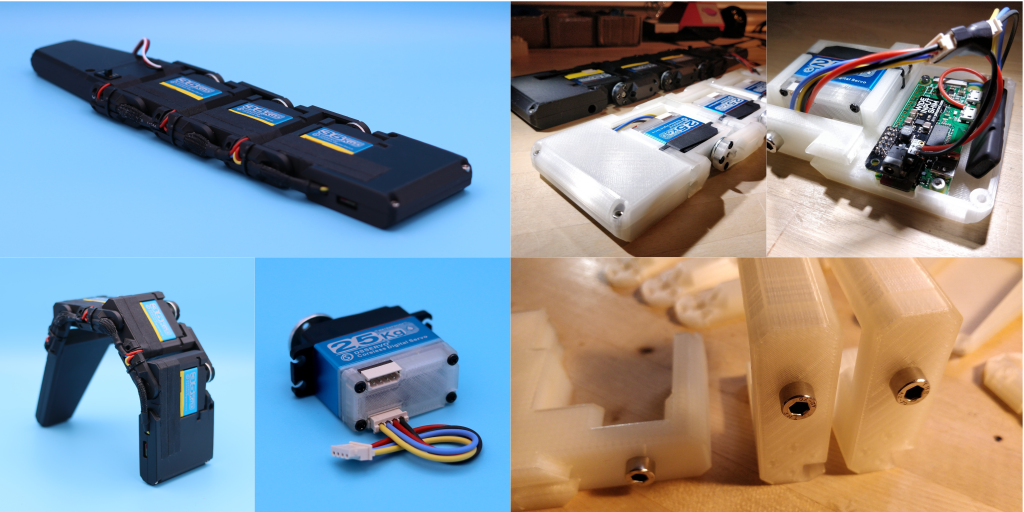We believe that modern robotics/AI needs a boost from the bottom, to take another two to three steps back and take the time to close the sensorimotor gap and look intensively at learning procedures before moving on to higher function such as assistance for humans.
That’s why we developed flatcat as an open, extremely simplified platform from the ground up to enable people from different scientific and research fields, as well as developers and engineers, to develop their own applications or solve research questions with a real robot. flatcat is designed to be inexpensive and highly simplified, making it accessible to many.
flatcat is used as a social robot. Possible applications for flatcat is elderly care, therapeutic sessions, and robot companions (robot pets)

After the initial release, flatcat is open-source in hardware, firmware, and software. The mechanics are made of 3D-printed parts and can therefore be repaired and adapted over and over again. We use readily available off-the-shelf components as much as possible to ensure parts availability. The design is modular and expandable, e. g. more joints, different motors, new controllers, more sensors, etc. The mechanics are portable and lightweight, i. e. results can be presented live, mobile use is possible, etc. The motion dimension of flatcat is 2-dimensional and the reduced complexity is initially very convenient for many applications, the robot can be maintained and operated by one person, (desktop research robot).

flatcat provides a Python/C++ interface for the development of applications. The host platform is currently a Raspberry Pi (Zero/W) with WiFi module which drives the motors via symmetric data bus (RS-485, 1MBaud).
The power supply can be 5-12V, the internal battery is a 3-cell parallel lithium-polymer battery with 3V7 nominal voltage, stepped up to 5V.
The motor controllers are itself an open-source development: called Sensorimotor. We created a custom PCB and housing attached to standard off-the-shelf servos. They have rich sensory feedback (bidirectional current, supply voltage, temperature, 300° position, and speed) and provide various control modes such as position PID and Cognitive Sensorimotor Loops (CSL). The motors can also be used for simple sound generation (Beta).
With flatcat we test two groundbreaking new approaches. First is the motions, we use Cognitive Sensorimotor Loops (CSL) that enable the robot to instantaneously react to human touch and gravity, without extra sensors. The motors serve as a sensor, too. No force sensors needed.
The second is Intrinsic Motivation, we test this Reinforcement Learning technique to keep a constant level of self-exploration. This allows us to operate the robot with zero user interface.
Watch the videos! I'm happy to answer your questions.


